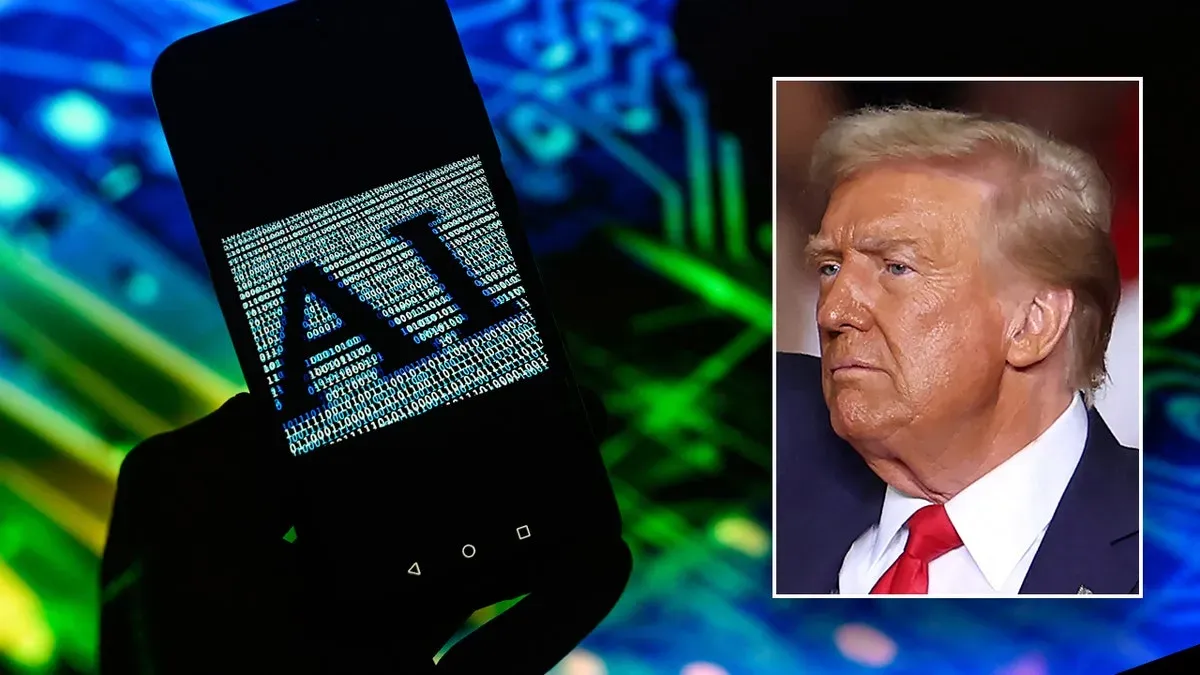Trump AI Experts are at the center of a contentious battle between two administrations over America’s future in artificial intelligence. Under the Trump administration, a series of executive orders aimed at reinvigorating the nation’s leadership in AI have surfaced, but challenges abound. Controversially, this latest administration’s sweeping dismissal of AI talent, many of whom were recruited during the Biden AI initiative, threatens to undermine these ambitions. As the federal workforce grapples with a significant gap in essential expertise, critics argue that the loss of such skilled professionals could lead to rising issues, including artificial intelligence job loss. Thus, the landscape of technological advancement in the government now rests precariously on the ability to attract new AI talent amidst a backdrop of instability.
The ongoing saga surrounding technology specialists in the government reflects a larger trend as recent shifts in executive leadership create ripples across the field of artificial intelligence. With the advent of new policies during the Trump administration, a focus on bolstering the nation’s AI capabilities is evident, yet it stands in stark contrast to the previous efforts put forth by the Biden administration to recruit and retain top AI professionals. This dynamic interplay between the political environment and the recruitment of skilled workers showcases the complexities inherent in the federal workforce’s relationship with technology. As agencies struggle to maintain a competitive edge in the burgeoning field of artificial intelligence, the urgency to address federal workforce attrition and its repercussions is more critical than ever. Acknowledging these challenges is essential for navigating the precarious intersection of governance and technological innovation.
Trump Administration’s Commitment to AI Growth
President Trump’s administration has been vocal about its commitment to establishing the United States as a leader in artificial intelligence. With the signing of several executive orders focused on AI, his approach seeks to harness the potential of this revolutionary technology. The directive for federal agencies to recruit more AI specialists reflects a drive to integrate advanced AI solutions within government operations, enhancing sectors such as education and healthcare. This initiative aims at not only boosting job creation but also improving service delivery to the citizens.
However, the efficacy of these efforts is under scrutiny due to the significant turnover in federal AI talent caused by the recent mass terminations. Experts argue that while Trump’s administration sets ambitious targets for AI, the simultaneous loss of experienced personnel jeopardizes these strategic initiatives. Compounding this situation is the challenge posed by a competitive job market, where tech firms often offer higher salaries, further complicating the Trump administration’s recruitment challenges.
Impact of Biden’s AI Talent Surge
The Biden administration made substantial investments in AI by implementing the ‘National AI Talent Surge’, aimed at attracting top-tier technology experts from the private sector into federal roles. This initiative brought over 200 highly skilled personnel into various branches of government, focusing on projects that utilize AI to streamline processes and deliver better services to the public. Such efforts have been pivotal in modernizing federal operations, from enhancing social security systems to improving veterans’ healthcare.
However, the Trump administration’s abrupt dismissal of many of these hires has been met with criticism from former officials. This fallout indicates a troubling trend of resource wastage, as the newly appointed AI experts, who were brought in to propel innovation, have now been let go. This raises concerns about how effectively Trump’s administration can achieve its AI objectives without a stable foundation of qualified personnel,
The drastic shifts in management signal a volatile environment that may deter future talent from considering government positions, undermining efforts for a robust federal AI strategy.
Challenges in Recruiting AI Experts
Recruiting professionals with expertise in artificial intelligence presents a unique challenge for the Trump administration, as highlighted by senior officials. The demand for AI talent in the private sector creates a competitive landscape where government roles often appear less appealing. Factors such as job security and public service motivation are crucial to attracting these specialists; however, the current environment has raised concerns. Quotes from Julie Siegel demonstrate the struggle to recruit AI experts when other sectors are aggressively courting talent with higher compensation packages and greater job stability.
Moreover, recent layoffs and the unpredictability regarding job security within the federal workforce have made it increasingly difficult for the Trump administration to present an attractive work opportunity for AI professionals. Both recruitment and retention remain critical issues; talented individuals are questioning the permanence of their positions in government roles given the high turnover rates experienced recently. This scenario paints a daunting picture for meeting the administration’s goals for expanding AI capabilities in federal agencies.
The Cost of Talent Loss in AI
The recent talent exodus from the federal employee base, particularly in AI, has significant implications for the government’s operational effectiveness. Agencies reliant on the technical expertise of AI professionals now face the daunting task of rebuilding teams that were purged in the last year, resulting in lost momentum on critical projects. As noted by Deirdre Mulligan, the consequences of these layoffs extend beyond immediate project delays; they erode trust among current and prospective employees concerning career stability within government roles.
Furthermore, the shift in focus towards recruiting fresh talent presents a financial burden. Without established experts, many agencies may have to rely on external contractors with the necessary AI expertise, which typically comes at a higher cost than maintaining a stable, in-house team. Thus, the strategic missteps observed during this transition not only risk ongoing initiatives but also signal potential increases in operational costs related to AI deployment.
Navigating Through a Chaotic Recruitment Landscape
The chaotic landscape following the substantial layoffs has rendered the government’s ability to attract AI talent even more precarious. As professionals like Angelica Quirarte have noted, the initial wave of enthusiasm for government roles among AI experts has been heavily dampened by the Trump administration’s unceremonious dismissals. With only a fraction of prior hires remaining, the challenge now is to rejuvenate interest in public service among technologists who are crucial for integrating AI into vital government operations.
To counteract this instability, the administration must cultivate an environment that promotes job security and professional growth opportunities. Potential recruits need assurance that their expertise will be respected and not subjected to sudden layoffs. Creating a more structured and supportive framework for AI professionals might serve as an essential step towards rebuilding this vital workforce, promoting an ethos of stability and collaboration within federal AI programs.
The Future of AI in Government Under Trump
Looking ahead, the Trump administration’s vision for AI in government hinges on the successful recruitment and integration of skilled professionals. With ambitious plans for AI’s role in enhancing public service, Trump aims to foster a technological revolution within federal agencies. The combination of strategic directives paired with enhanced, data-driven decision-making could potentially lead to transformative outcomes for constituents across various services, as the government taps into the potential of AI systems.
However, the prospects for success in this endeavor are contingent upon reversing the current trends of talent loss. Ensuring the retention of skilled workers while establishing a welcoming environment for new recruits will be essential. Trump’s administration’s commitment to this cause could define the trajectory of AI advancement in government, ultimately shaping the efficacy of federal services and their alignment with the needs of the American people.
Understanding the Biden AI Initiative’s Impacts
The Biden AI initiative represented a significant commitment to harnessing the power of artificial intelligence across numerous agencies, aimed at optimizing services and improving citizens’ experiences. By effectively attracting top-tier AI talent, the initiative sought to develop innovative applications of technology, alleviating bureaucratic burdens and enhancing programs such as Social Security and healthcare services for veterans. The impact of this initiative was clear in its mission to create a technologically fluent government workforce.
Now, with the new administration’s shift in priorities, the legacy of the Biden AI initiative faces interruption. The Trump administration must navigate these changes while understanding the profound impacts of previous efforts. The continuation or dissolution of these initiatives will not only affect the immediate operational effectiveness of federal services but also determine the long-term direction of AI in the public sector.
The Role of Federal Workforce Stability in AI Initiatives
Federal workforce stability plays a paramount role in the successful implementation of ambitious AI initiatives. The high turnover and instability witnessed during recent transitions have created an environment rife with uncertainty, preventing the development of cohesive and long-term strategies within government agencies. As many experts have pointed out, the need for a steady, knowledgeable workforce is crucial for adequately deploying AI technologies that can streamline government functions.
In light of this, future strategies should focus not only on recruitment efforts but also on creating an inclusive and supportive environment where AI experts are valued and retained. The integration of robust support systems for managing talent will be vital to sustaining AI initiatives, ensuring both continuity and growth, and optimizing resource allocation within the federal workforce.
Trump Administration’s Strategies for Attracting AI Talent
In a bid to attract AI talent, the Trump administration has outlined a range of strategies aimed at reinvigorating the federal workforce. Significant investment in technology recruitment and a focus on operational experience in AI have been foregrounded in Russell Vought’s employee strategies. The intent is clear: to build a robust team capable of optimizing government operations through the efficient use of artificial intelligence.
However, realizing these strategies requires overcoming hurdles created by the previous purges in employment. Ensuring that personnel feel secure in their positions while advocating innovation and technological improvement is essential for the successful implementation of AI initiatives. As the administration navigates through this landscape, understanding the implications of these strategies is crucial for making headway in the quest for a skilled federal AI workforce.
Frequently Asked Questions
What initiatives did the Trump administration implement to attract AI experts?
The Trump administration launched several initiatives to bolster its AI workforce, including executive orders aimed at enhancing America’s dominance in artificial intelligence. On April 3, 2025, a memo from Russell Vought, the Director of the Office of Management and Budget, outlined expectations for federal leaders to focus on recruiting individuals with operational experience in AI, indicating a strategic effort to attract top talent to government roles.
How did the hiring practices under Trump affect the federal workforce skilled in AI?
Under Trump, there was a significant purging of AI experts who were brought into the federal workforce during the Biden administration’s ‘National AI Talent Surge.’ These layoffs, particularly by Elon Musk’s team, led to a rapid depletion of skilled AI personnel, creating challenges for the Trump administration’s goal of effectively implementing artificial intelligence across government agencies.
What impact did the Biden AI initiative have on the recruitment of AI talent?
The Biden AI initiative successfully persuaded over 200 AI technology experts from the private sector to transition into the federal workforce, enhancing the government’s capability in utilizing AI. However, the subsequent dismissals by the Trump administration undermined these efforts, resulting in a loss of crucial expertise that could have supported federal agencies in employing artificial intelligence effectively.
Why is attracting AI talent critical for the federal government?
Attracting AI talent is critical for the federal government because skilled professionals can help streamline essential services such as Social Security and tax filings through the implementation of advanced technologies. The competition for AI experts is fierce, as these individuals are in high demand in the private sector, making it essential for the government to create a stable and appealing work environment to retain and recruit them.
What challenges does the Trump administration face in recruiting AI specialists after recent layoffs?
The Trump administration faces significant challenges in recruiting AI specialists due to the chaotic layoffs that occurred when many experts were dismissed. This eroded trust in the federal workforce as a viable career path, making it difficult to attract skilled professionals who may now be hesitant to work in an environment characterized by instability and fear of job security.
How did former officials view the loss of AI experts under the Trump administration?
Former officials critique the loss of AI experts under the Trump administration as a substantial waste of federal resources, arguing that it undermines the government’s ability to leverage artificial intelligence effectively. They suggest that as a result of these dismissals, agencies may increasingly depend on costly external companies for AI expertise, which could further strain public resources.
What are the long-term implications of Trump’s policies on the federal AI workforce?
The long-term implications of Trump’s policies on the federal AI workforce could include a continued struggle to recruit and retain talented AI professionals, as well as a potential decline in the government’s capability to utilize artificial intelligence for efficient service delivery. Experts warn that without a stable and respected environment, capable professionals may seek opportunities outside the federal government, diminishing the potential for innovation in public service.
How does the competition for AI talent affect federal hiring strategies?
The competition for AI talent heavily influences federal hiring strategies, compelling agencies to develop more attractive recruitment processes and retention programs. With the private sector offering higher salaries and more flexible work environments, the federal government must find ways to enhance its appeal, including focusing on creating a stable work environment and recognizing the value of technical expertise in its workforce.
What role did Angelica Quirarte play in recruiting AI specialists?
Angelica Quirarte played a pivotal role in recruiting AI specialists for the federal government, having previously led programs aimed at encouraging tech talent to enter public service. Her efforts during the Biden administration resulted in successfully hiring hundreds of AI experts, though she reported that only about 10% remained in government positions after the Trump administration’s layoffs, highlighting the challenges of retention in the wake of personnel instability.
| Key Point | Details |
|---|---|
| Trump’s Executive Orders on AI | Trump signed multiple executive orders aiming to enhance AI capabilities, including integrating AI into schools and hiring more AI experts. |
| Purging of AI Experts | The Trump Administration quickly dismissed AI experts hired during the Biden Administration, causing a loss of expertise. |
| Impact of Layoffs | Former officials criticized the purging as a waste of federal resources, suggesting a reliance on expensive external contractors for AI expertise. |
| Recruitment Challenges | Hiring AI specialists remains difficult due to market competition for tech talent, making it harder for the Trump administration to attract experts. |
| Current Objectives | Trump’s administration aims to accelerate AI use in government with set expectations for federal leaders to recruit experienced AI professionals. |
| Effect of Previous Hires | Only about 10% of AI specialists previously hired remain in government, showing the challenge for the Trump administration in retaining talent. |
| Quirarte’s Experience | Angelica Quirarte resigned from her position after experiencing a chaotic environment that did not support effective governance. |
Summary
Trump AI Experts are witnessing a significant shift in the federal approach to artificial intelligence as the current administration navigates the fallout from recent layoffs of experienced personnel. The aggressive replacement and dismissal of AI experts by Trump’s administration undermine efforts to establish a robust AI framework, thus complicating future recruitment and retention of tech talent in federal jobs. With pressing challenges surrounding stability and expertise, the path ahead for Trump AI Experts is fraught with difficulties that require concerted efforts to resolve.



